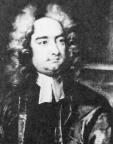Jonathan Swift [1667-1745] in his book, “Gulliver’s Travels” [1726], described Australia long before the voyage of Captain James Cook RN [1770], with information which could only have come from ancient Chinese writings on the mysterious southern continent. He also described a primitive hairy race that inhabited that land as the Yahoos.

Photo courtesy of the British Information Service,
London UK.
The Yowie Mystery - Living Fossils from the Dreamtime.
Copyright © 2007 by Rex Gilroy
All rights reserved
First Edition
Rex and Heather Gilroy are recognised internationally as Australia’s foremost relict hominid researchers. This book celebrates Rex Gilroy’s 50 years as the ‘father’ of Yowie research. Rex and Heather are also recognised internationally as one of the world’s foremost husband and wife research teams in the field of ‘Unexplained’ mysteries.
These daring and outspoken researchers are no friends of the Australian hard-core, narrow-minded scientific establishment, who would prefer that books of the kind produced by the Gilroys were prevented from publication.
When not carrying out field work, Rex and his wife Heather [a Registered Nurse/Midwife by profession] are at home writing books, surrounded by their huge reference library of books on all manner of scientific subjects. Besides their many and varied researches, Rex and Heather Gilroy are also involved in community service work as members of the Rotary Club of Katoomba.
Dead Horse Gap, near Thredbo. This wild region of the Snowy Mountains has been a “hairy man” locale since the first years of 19th century settlement hereabouts.
During June 1999 a stockman was riding his horse through wild scrub overlooking the road near
where this photo was taken, when he spotted a number of “huge man-like footprints” in a mud patch.

Photo copyright © Rex Gilroy 2007




